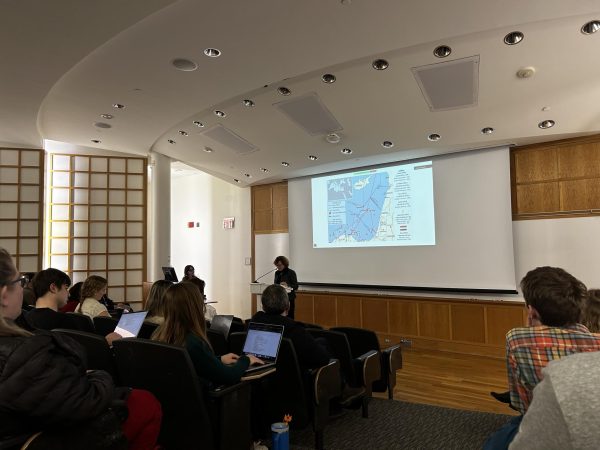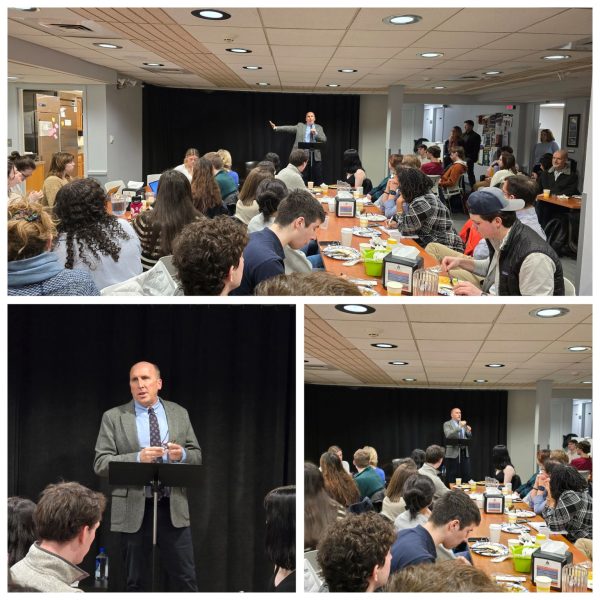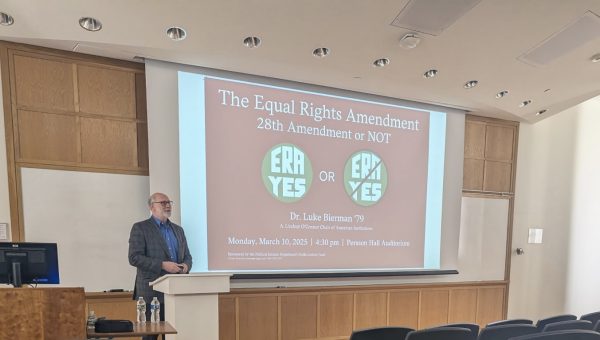Ireland’s Recession and Recovery
Associate Professor of Economics at Smith College, Dr. Roisin O’Sullivan came to Colgate to give a lecture titled “The Irish Debt Crisis: Origins and Lessons for the Future” on Wednesday, October 28. O’Sullivan completed her undergraduate studies at University of Galway, Ireland and continued her education at the Ohio State University, where she earned an M.A. and a Ph.D. Her lecture concerned the causes of the 2008 Irish debt crisis and how Ireland currently deals with its repercussions. O’Sullivan is a contributing member of the Irish Fiscal Advisory Council, an independent panel of economists chartered to monitor the Irish economy in its recovery.
O’Sullivan began her lecture with photographs of the Irish landscape, explaining how it played a role in the debt crisis. According to O’Sullivan, the rise in the price of property fundamentally influenced the economic downturn.
“These things make for great landscape but [are] not so great for macroeconomic performance,” O’Sullivan said, referring to the photographs of cliffs dropping off into the sea.
She then went on to describe the stages of Ireland’s economy before the crisis, when it was known as the “Celtic Tiger.” With Ireland’s integration into both the European Union (EU) and the European Monetary Union (EMU), the country found itself sharing a monetary policy and currency with 18 other countries in the EMU. This transition was conducted by the European Central Bank (ECB), in which Ireland played, and still plays, only a small role. With its entrance into the EU, Ireland was able to freely move labor, capital and services with 27 other countries, which opened up more opportunities for economic growth.
According to O’Sullivan, Ireland grew substantially during the Celtic Tiger period, in part because of foreign direct investments (FDI), especially from the United States. During the period from 1991 to 1993, FDI from the U.S. into Ireland tripled and was six times higher than United States investments into France and Germany. O’Sullivan cited Ireland’s primary language being English as one of the causes for the U.S. choosing to invest in Ireland over other European countries.
This led to an increased demand for property, causing prices to rise. Although, up until this point, Ireland’s growth was natural and based on sound principals, O’Sullivan discussed how Ireland’s current growth was now fueled by a bubble in the property market.
In what O’Sullivan claims was a crucial mistake by the Irish government, Ireland increased interest relief for investment properties and cut various taxes, along with other measures to increase the growth of the economy. Banks then started loosening their lending standards. All of this eventually led to the economic downturn in 2008.
“The wheels came off the bus when Lehman Brothers crashed,” O’Sullivan said.
Ireland faced a complete property market crash, and since, as O’Sullivan pointed out, a crisis is never an isolated occurrence, this led to a banking crisis as well. In an attempt to mediate these problems, the Irish government announced that they would cover all of their bank’s loans. Eventually Ireland got to a point where it was no longer able to access finance borrowing and needed a bailout.
“We’re back in a much safer and much more sustainable way,” O’Sullivan said of the current economic status of the country. The government responded by strengthening Ireland’s fiscal framework, which included creating the Fiscal Advisory Council. Ireland is now the fastest growing country in Europe with low interest rates, and it looks like it is heading toward recovery.
For the economically savvy audience members, O’Sullivan included the macroeconomic policies and jargon related to both the crash and its recovery.
“The overarching theme here that is important…is the fact that policy mistakes, made in the earlier days – especially when the economy was doing well – was what put it in [this] situation,” Dr. O’Sullivan said.
Senior Jamie Gaglioni was one of the students in attendance at the lecture.
“When we do not incorporate a variety of narratives, and a variety of reasons for joining the EMU, we begin to lose sight of why the Eurozone was created in the first place. Dr. O’Sullivan reminded us of the importance of understanding a multiplicity of impacts,” Gaglioni said.





